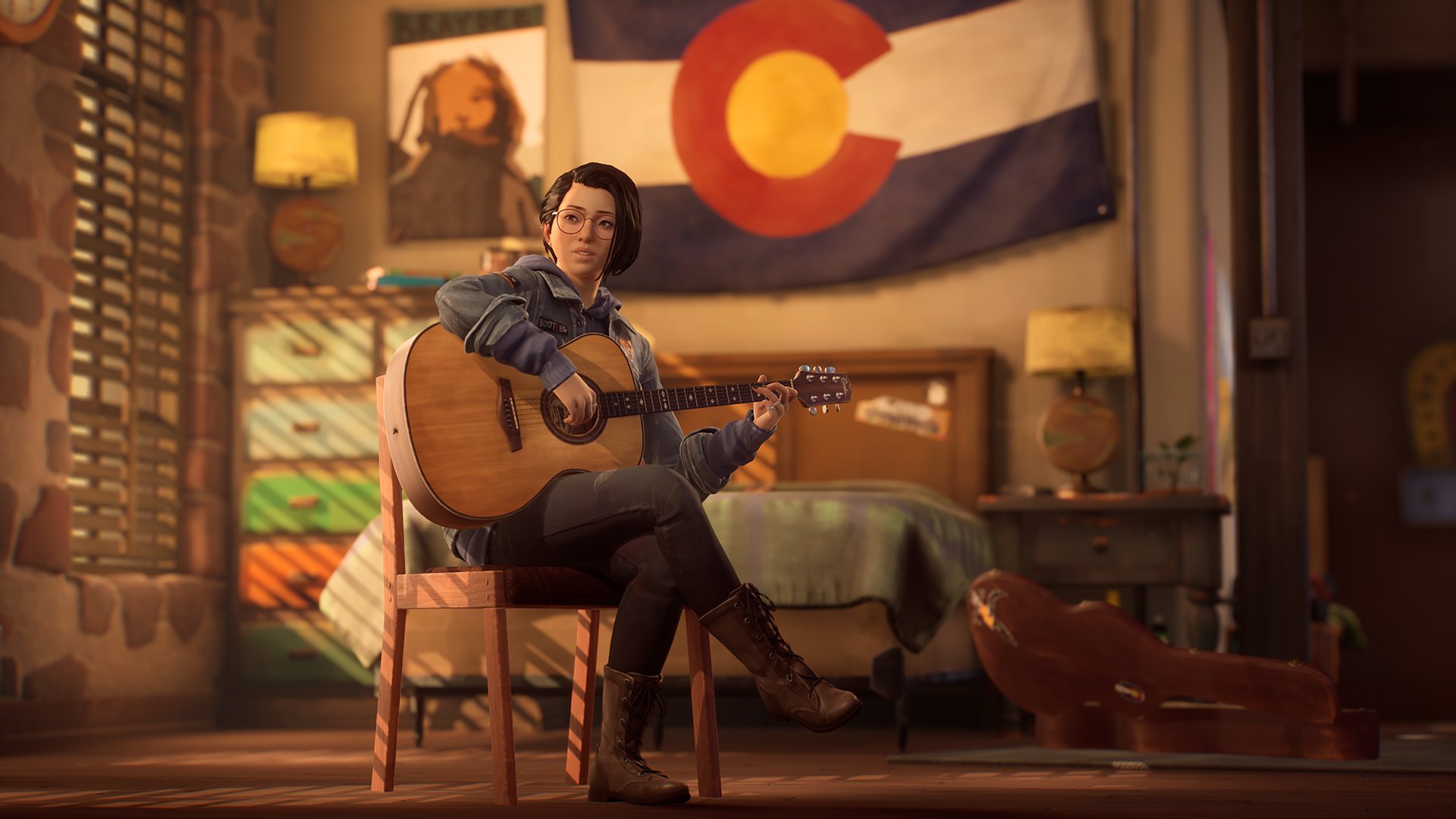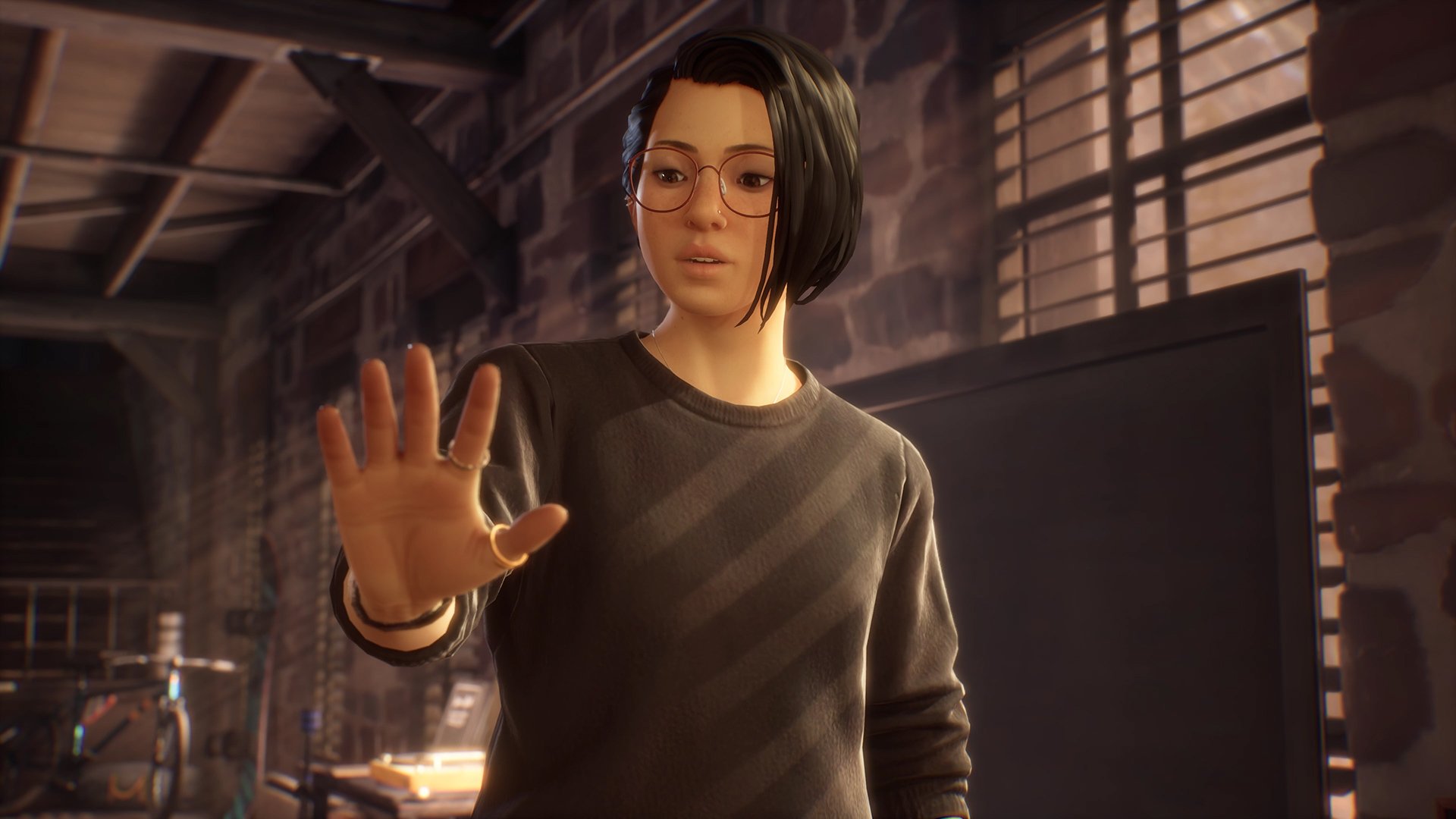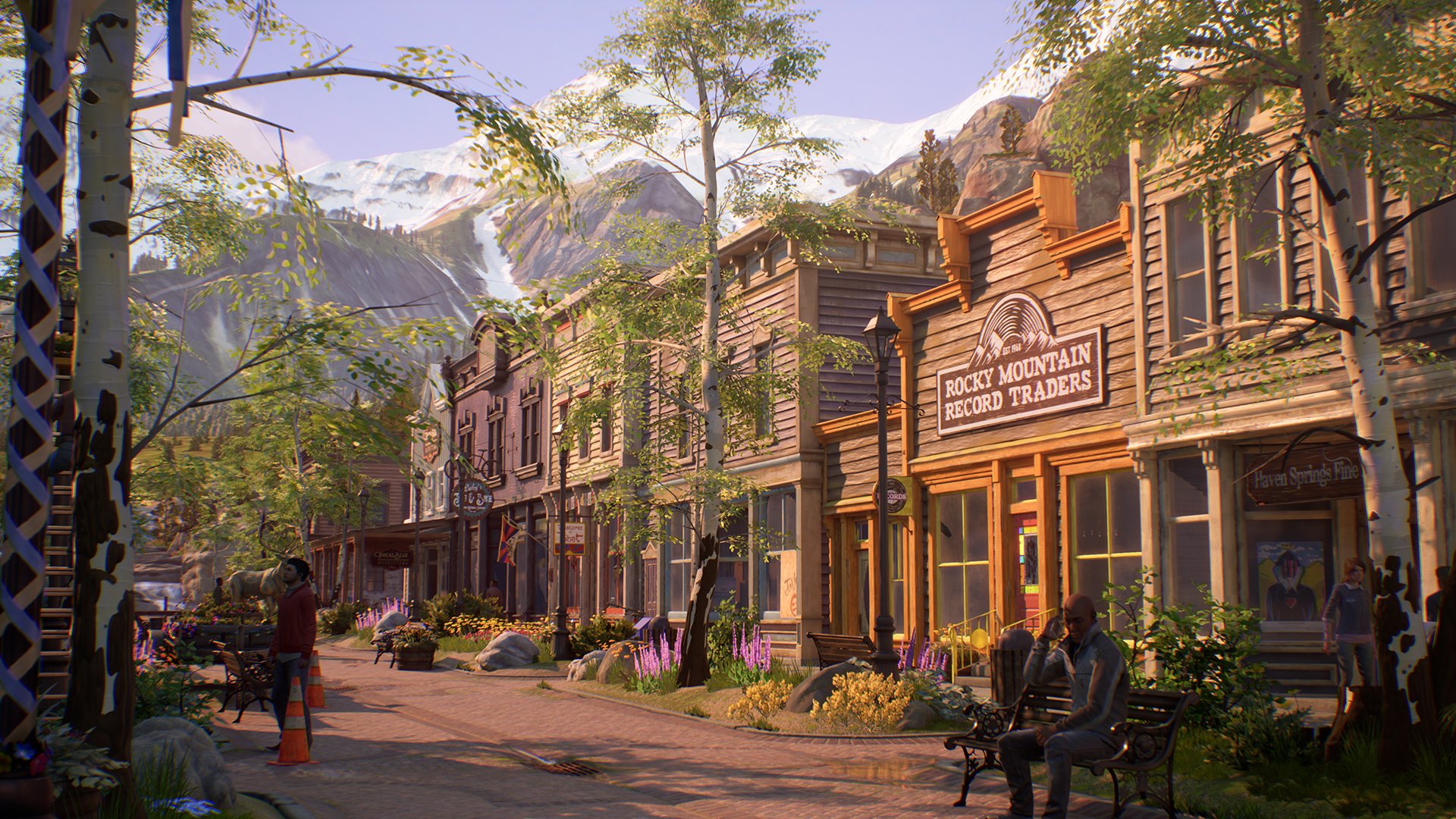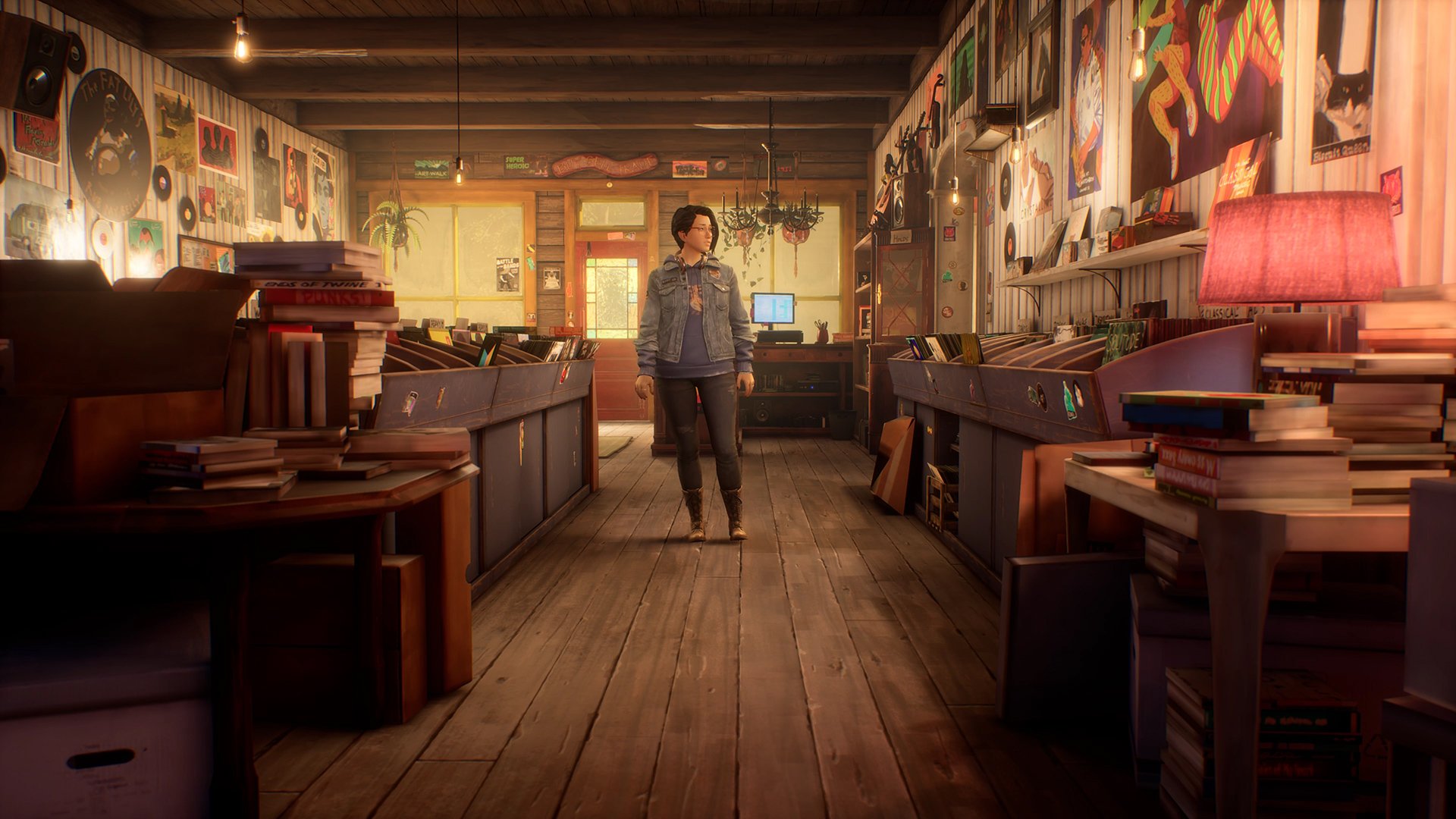Life is Strange True Colors - Review

Life is Strange is one of my favourite games of all time, and its follow-up prequel Before the Storm was a charming and powerful addition to a wonderful narrative experience. Going into Life is Strange 2, I had high hopes… but for whatever reason, it just didn’t grip me. Its slow episodic release schedule felt like it was constantly working against the game’s high stakes, and its characterisation, while fine, didn’t feel like anything particularly special. Life is Strange: True Colors, then, really could’ve gone either way. It had an interesting premise, an awesome-looking main character, and like Before the Storm, was written and developed by Deck Nine. It was also releasing all at once, rather than a short episode releasing every 6 weeks or so. All great improvements, but I still worried that perhaps the magic of the original game would be missing. I’m extremely pleased to say that those worries were completely unfounded.
True Colors tells the story of Alex Chen, a twenty-something woman who, after a decidedly rocky childhood, was separated from her delinquent older brother Gabe and thrust into the uncaring and often damaging foster home system. Gabe spent the better half of a decade cleaning up his act, making a home and career for himself, and tracking Alex down, and finally, after all his hard work, was able to bring Alex back into his life. He brings her to the fictional town of Haven, Colorado, a mining town not unlike many other small industry towns undoubtedly found all over the US. There, Alex and Gabe get acquainted with each other, and Alex learns all about the town — the flower shop run by an aging woman with a nearly-in-college daughter, the small-town bar where Gabe lives and works, the vinyl record store with a local radio station. Haven’s a town where everybody knows everybody, and these hallmarks of cosy civilisation effectively help it feel like a real, lived-in town, with real stakes and real stories to be told. That’s a huge step up from the first game’s Arcadia Bay, where it felt like there was a lot happening in the background, losing some of the intimacy that Haven brings to the table.
Barely 12 hours after Alex’s arrival, however, tragedy strikes. After a search for a missing child in the nearby mountains, a scheduled detonation by the town’s mining megacorp goes ahead, despite the company knowing that there were people out there in the danger zone, and Gabe’s life is tragically brought to an end. This heart-wrenching, tragic death provides the driving force behind the rest of the story, and gives Alex a lot to grapple with. It’s a powerful setup for a story about human emotion, a setup that both grips the essence of the town and drives a wedge between its inhabitants, while pushing Alex to explore very real feelings about why her life is the way it is. The choices that you make along the way might not feel quite as important or impactful as they did in previous entries in the series, but they’re still agonisingly difficult in places, and they’ll make you feel like the stakes are a lot higher than they are. And dropping the episodic release structure, while still keeping chapters in the game feeling distinct, means that you can go at your own pace, and give yourself a little bit of a break when things get too heavy (and trust me, you’ll need it).
And of course, there’s the supernatural element to these games, too, and True Colors goes with something a little more subdued than previous games. The first game in the series offered its protagonist time travel abilities, and the second saw a bit of telekinesis thrown into the mix. True Colors gives Alex the ability to see, experience, and influence others’ emotions, via an aura that appears around folks when they experience strong emotion like sadness, anger, or even joy. The story touches on these powers quite a few times, but it never feels like it’s pushing them to the forefront of the experience — this is a story primarily about the people of Haven and how they’re coping with the tragedy, rather than any supernatural force. The few times where these powers are brought to the forefront, when Alex dives into the emotional state of another person, are small, powerful moments that start to unravel the mysteries behind this sleepy little town. Alex is a naturally guarded person, holding her own emotions close to her chest after a lifetime of grief and abuse, so seeing her slowly open up through the use of her powers over her time in Haven is absolutely lovely, too.
The characters in True Colors are similarly lovely, each written and performed with the depth and care that Deck Nine employed with Before the Storm. Alex is a tortured soul, left to piece together the fragments of her brother’s life. We also see Ryan and Steph (who previously featured in Before the Storm), Gabe’s best friends in Haven, left to grapple with whether Alex can fit into their lives in the same way Gabe used to. There’s the bumbling but mostly caring small-town cop, the mining company’s fall guy for the incident, the stoic but fatherly barkeep, the shattered ex-girlfriend and her action-loving son. Throw in the fact that Deck Nine have made sincere efforts to boost their representation, with the option for Alex to be very unapologetically queer and offering both a male and female romance options, and you get a game that feels like it was made for the modern generation, rather than being stuck in the past.
Still, there are some issues with the game. Its controls mirror those of the first few games, leaving actually moving around the world and interacting with set pieces feeling very clunky. I suppose, given the nature of it, there’s not too much that can be done to shake up that control scheme, but even adding the option to run, or being able to click a button to swap through nearby interactable objects rather than having to awkwardly pan the camera just right would go a long way in making it more enjoyable to play. On a more personal grievance, while the game does offer a host of accessibility options for a wide variety of potential disabilities and ailments, its colourblindness options are massively disappointing, falling back into the stale and largely unhelpful colour filter that has sadly shown up in many many games before it. Colour vision isn’t extremely vital to the game, you can get by just fine with it in its default state, and I managed to complete it without any issues, but if you’re going to offer colour vision accessibility options, you need to do it right. Colour filters are not doing it right. And the irony of a game called True Colors holding back its artistic presentation with ugly colour filters that make colours anything but true is certainly not lost on me, either.
Those issues aside, though, there’s a lot to love about the presentation of True Colors. I tested the PC version of the game, on my rig with a Ryzen 7 and an RTX2070, and I was able to get the game running at a solid 4K60 without ray tracing, and a pretty damn good dynamic 1440p60 with ray tracing turned on. It’s got an absolutely gorgeous art style that toes the line between realism and cartoonishness, a departure from the first game’s more painterly style but a welcome one to be sure. Every part of Haven looks hand-crafted by the gods for beauty, and the character models are modelled with just enough realism to really show the emotions on each character’s face. It also has a wonderful soundtrack, filled with an eclectic mix of indie acoustic and more rock-y tunes, in what may or may not very closely resemble a couple of my playlists from my uni days. I did experience a couple of crashes during my time with the game, and some texture streaming issues from time to time, but neither of these really stood in the way of my enjoyment for the most part, and very well could’ve been a result of my setup rather than the game.
Life is Strange: True Colors is the series’ finest outing to date, quickly surpassing the original and its prequel as one of my favourite games of all time. It’s a charming, heartbreaking, wonderful story filled with heart and emotion, made by a team that clearly cares deeply about the work they’re doing. Its controls might feel a little outdated, and its colour accessibility leaves something to be desired, but these are easily overlooked when the rest of the game is as utterly fantastic as it is.
The Score
9.0
Review code provided by Square Enix
The Pros
+Lovely story and characters
+Looks and sounds absolutely amazing
+Tones down the supernatural elements to let the characters shine
The Cons
-Controls are a bit clunky and outdated
-Colour vision filters are pretty much useless, as always
-A few minor crashes and texture issues here and there









